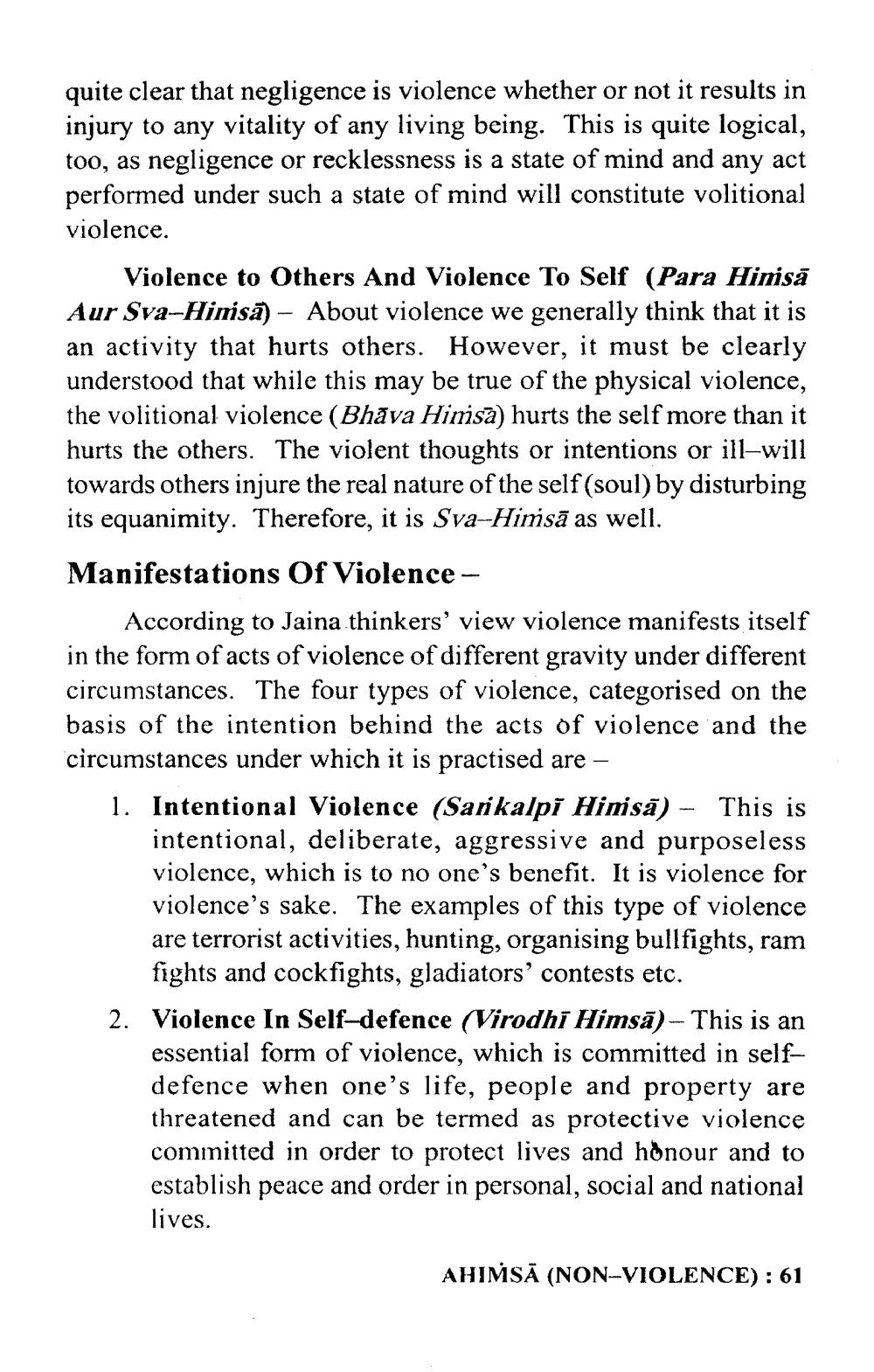________________
quite clear that negligence is violence whether or not it results in injury to any vitality of any living being. This is quite logical, too, as negligence or recklessness is a state of mind and any act performed under such a state of mind will constitute volitional violence.
Violence to Others And Violence To Self (Para Himisă Aur Sva-Himsā) - About violence we generally think that it is an activity that hurts others. However, it must be clearly understood that while this may be true of the physical violence, the volitional violence (Bhāva Himsā) hurts the self more than it hurts the others. The violent thoughts or intentions or ill-will towards others injure the real nature of the self(soul) by disturbing its equanimity. Therefore, it is Sva-Himsā as well. Manifestations Of Violence -
According to Jaina thinkers' view violence manifests itself in the form of acts of violence of different gravity under different circumstances. The four types of violence, categorised on the basis of the intention behind the acts of violence and the circumstances under which it is practised are – 1. Intentional Violence (Sankalpi Himsā) - This is
intentional, deliberate, aggressive and purposeless violence, which is to no one's benefit. It is violence for violence's sake. The examples of this type of violence are terrorist activities, hunting, organising bullfights, ram
fights and cockfights, gladiators' contests etc. 2. Violence In Self-defence Virodhi Himsā) - This is an
essential form of violence, which is committed in selfdefence when one's life, people and property are threatened and can be termed as protective violence comınitted in order to protect lives and honour and to establish peace and order in personal, social and national lives.
AHIMSĀ (NON-VIOLENCE): 61




